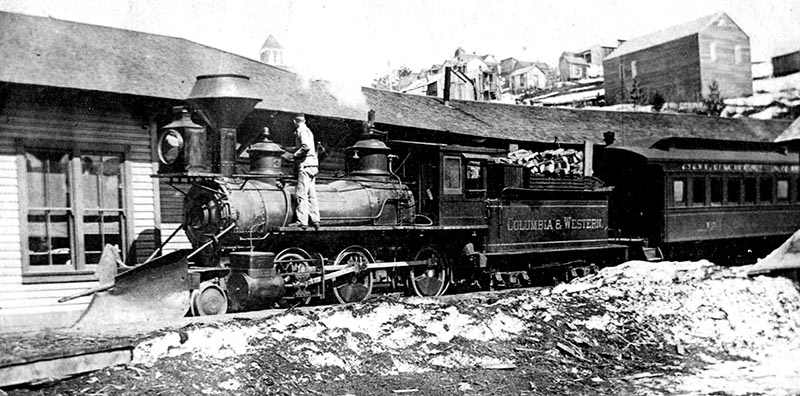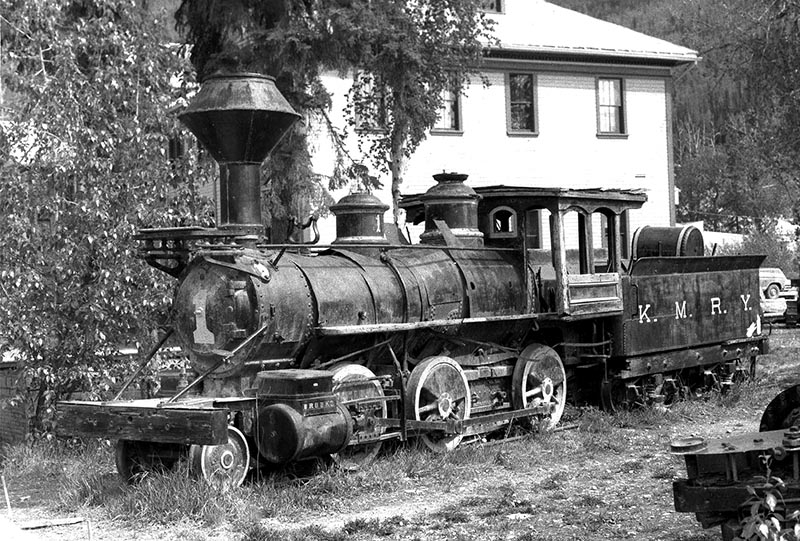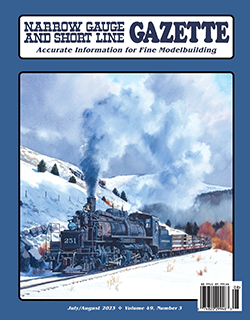The founders of the White Pass & Yukon Route (WP&YR) had some grandiose plans for the north. The original plan for the WP&YR was for it to extend all the way to Fort Selkirk, Yukon Territory, some 327 miles from Whitehorse. This would have made the WP&YR rail line almost 440 miles long! To that end, the Pacific Contract Company (PCC) was the construction company of the line and was acquiring motive power. By the end of 1899, the WP&YR/PCC possessed eight locomotives and had ordered four more from the Baldwin Locomotive Works of Philadelphia, Pa. In early 1900, the company bought three more used locomotives bringing the total number of locomotives to 15.
The story of two of these locomotives starts over 1600 miles to the southeast of British Columbia in eastern Kansas. Chartered on May 31, 1871, the Kansas Central Railway (KC) was to build a 3-foot narrow gauge railroad from Leavenworth, Kan., to the western side of the state. The year 1872 saw the line’s terminus only 55 miles west and this would not change for five years. Be-tween 1877 and 1879, 40 miles were added. By April of 1879, the KC was in foreclosure and sold for $252,000. The new owners reorganized the company as the Kansas Central Railroad (KCRR). Jay Gould, the famous robber baron, bought the KCRR in November for $432,000 and resold it the next day to the Union Pacific (UP), making a cool $47,000 profit in the process. The KCRR operated as an associated line of the UP, but retained its own corporate identity. The UP pumped money into the line; buying locomotives and extending the total mileage to 165 miles in 1882.

ABOVE: Columbia & Western 3 pauses at the depot with at least one passenger car. Three-times-daily passenger service started on the C&W in December 1896. The fireman appears to be polishing the 1881 Brooks mogul, originally built for the Kansas Central RR in 1881 as 8. In just a few years, this engine will become WP&YR 65. —Unknown photographer, Bruce Pryor collection.
KCRR 7, a 2-6-0 named the Sidney Dillon (named after the president of the UP at the time) was built by the Brooks Locomotive Works in April 1881. KCRR 8, a nearly identical 2-6-0 named L.T. Smith (named for the president of the KCRR), was built by Brooks in September of the same year. Both locomotives were renumbered in 1885 to numbers 102 and 103 respectively to conform to the system wide numbering system of the Union Pacific. The KCRR was converted to standard gauge in August of 1890, and the narrow gauge locomotives were most likely shipped to Salt Lake City and stored for sale, along with the locomotives from several other narrow gauge lines the UP had taken over.
The third locomotive’s story also began in the 1870s when coal was first mined in a portion of the Great Plains in south-central Alberta, Canada. On April 25, 1882, Alexander Galt was granted incorporation of the North-Western Coal & Navigation Co,. Ltd., (N-WC&N) in London. This charter permitted the new company to “build and operate mines, sawmills, boats, build a town with schools, stores, churches, houses and hospitals, and promote immigration.” The N-WC&N applied to parliament in 1883 to build a railway from Medicine Hat to Fort Mcleod in order to expedite delivery of coal to the Canadian Pacific’s trans-Canadian railway, which in April of 1884 saw this request approved. Alexander then requested permission to reduce the gauge of the railroad to 3-feet in order to reduce the construction costs. This was approved on September 27th of that year and construction started sixteen days later in Dunmore, Alberta. There were several delays that winter and the next spring, but eventually 109 miles were laid in only 43 days…




